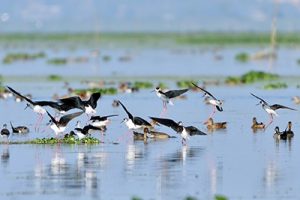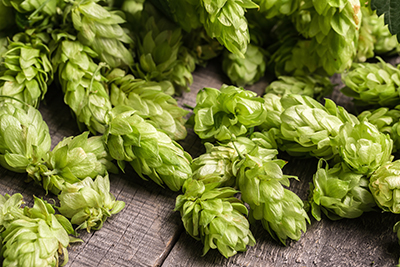FOR IMMEDIATE RELEASE
“Airborne Avian Influenza Virus in Ambient Air in the Winter Habitats of Migratory Birds”
Environmental Science & Technology

Finding a turkey this holiday season could be difficult because of avian flu outbreaks on farms. Migratory wild birds could be to blame for transmitting the virus to commercial flocks, but no one has looked closely at this wandering population until now. In ACS’ Environmental Science & Technology, researchers report that cooler temperatures and certain species gathering in the same winter habitat could increase the circulation of H7 and H9 strains.
Avian flu is currently monitored in the air at many poultry farms and live markets, where large outbreaks are likely to occur. But many of the deadliest outbreaks have been linked to migratory birds infected by H5, H7 or H9 strains. These wild birds live in spread-out populations where, even if there are infected individuals, the levels of viruses in the ambient air are quite low, making them hard to measure. Previously, Pei-Shih Chen and colleagues determined how to measure low levels of airborne avian flu virus RNA in the environment. Using this method, Chen, Chen-Chih Chen and a new team wanted to collect first-of-its-kind information on virus strains that are likely to be circulating among migratory birds at a winter habitat and assess which factors could be influencing the transmission risks within the wild flock.
The researchers collected air samples regularly for two years near a large wetland in east Asia and filtered the samples through very fine membranes. Viral RNA was extracted from the filters, amplified and analyzed for influenza strains A, H5, H7 and H9 by quantitative real-time polymerase chain reaction. Then the team compared the results to weather data and their log of bird species present during the migratory season. Lower daily temperatures were linked to higher levels of influenza A, H7 and H9 in the air. In addition, the presence of certain migratory bird species, including ones from the orders Anseriformes, Charadriiformes and Pelecaniformes, was linked to periods of elevated amounts of H7 and H9 viral copies. By demonstrating that ambient air sampling can detect airborne avian flu, the researchers say they’ve identified potential factors that impact the strains of the disease circulating in the winter among migratory birds.
The authors acknowledge funding from the Research Center for Precision Environmental Medicine, Kaohsiung Medical University, Kaohsiung, Taiwan from The Featured Areas Research Center Program within the Higher Education Sprout Project by the Ministry of Education in Taiwan; Kaohsiung Medical University Research Center Grants; the Council of Agriculture, Executive Yuan, Republic of China; Taiwan’s Ministry of Science and Technology, Republic of China; and the NPUST-KMU joint research project.
###
The American Chemical Society (ACS) is a nonprofit organization chartered by the U.S. Congress. ACS’ mission is to advance the broader chemistry enterprise and its practitioners for the benefit of Earth and all its people. The Society is a global leader in promoting excellence in science education and providing access to chemistry-related information and research through its multiple research solutions, peer-reviewed journals, scientific conferences, eBooks and weekly news periodical Chemical & Engineering News. ACS journals are among the most cited, most trusted and most read within the scientific literature; however, ACS itself does not conduct chemical research. As a leader in scientific information solutions, its CAS division partners with global innovators to accelerate breakthroughs by curating, connecting and analyzing the world’s scientific knowledge. ACS’ main offices are in Washington, D.C., and Columbus, Ohio.
To automatically receive press releases from the American Chemical Society, contact newsroom@acs.org.
Note: ACS does not conduct research, but publishes and publicizes peer-reviewed scientific studies.





